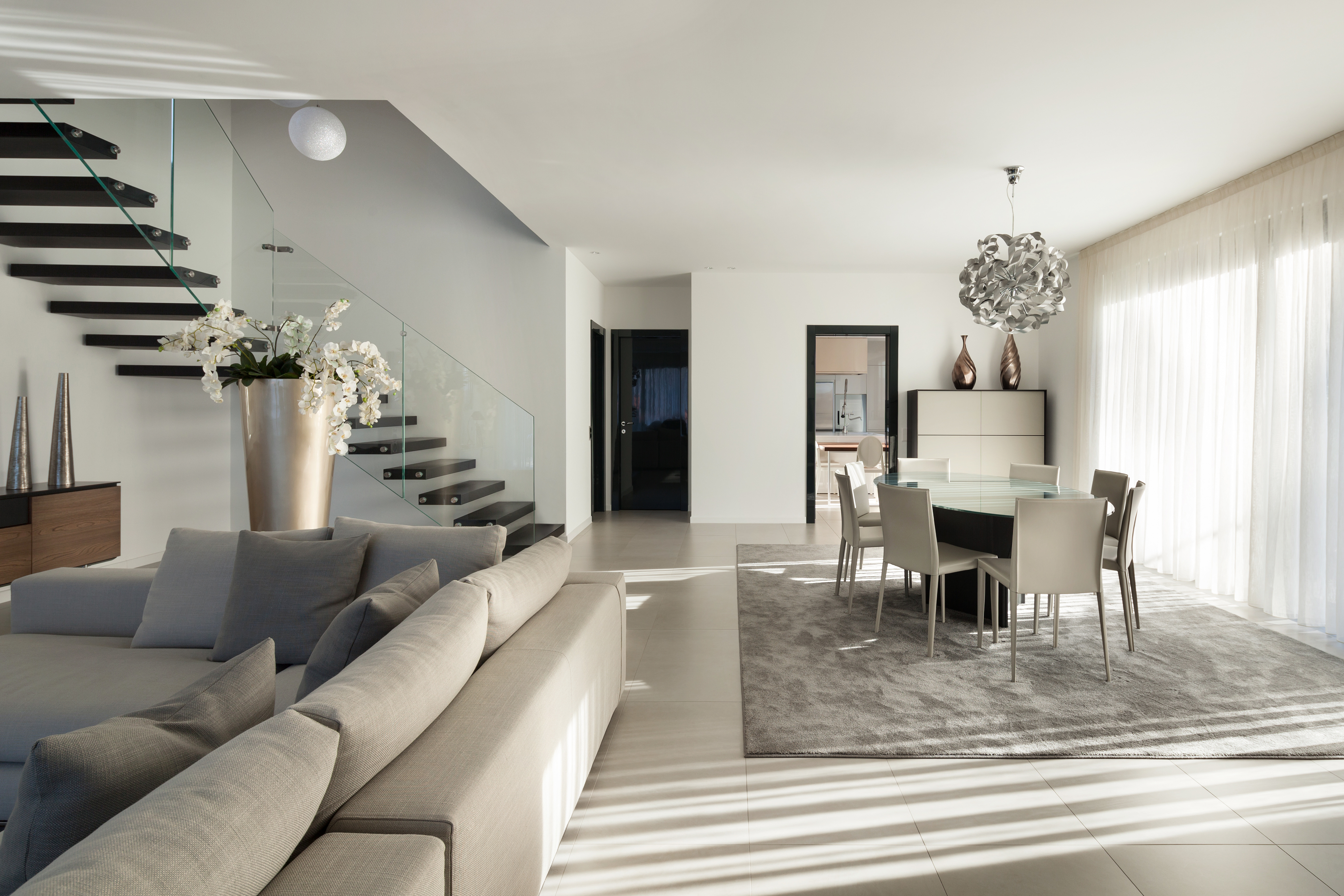 Regina Solomon wasn’t seriously looking to buy when she stopped on a whim to check out a local neighborhood of newly built homes.
Regina Solomon wasn’t seriously looking to buy when she stopped on a whim to check out a local neighborhood of newly built homes.
She was immediately drawn to a vacant property Northern Virginia builder Van Metre Homes had built on spec. It had all the right options and sat next to a common area where the kids could play. She pounced on the opportunity. Before long, her family was signing paperwork and moving in.
“If the house hadn’t been ready, I might not have been as willing to make a quick decision,” says the homeowner, who added that although she didn’t get to customize the home herself—a typical selling point for new construction—she was happy with the builder’s choices.
“The house just matched everything we wanted. They did a great job putting in the finishes I would have chosen anyway. I actually think they chose a higher quality of items than I might have picked if I had to sit and choose everything with a price list in front of me.”
Buyers like Solomon are the reason spec homes are making a comeback. In the decades before the housing crash, big builders like Levitt & Sons built their business models around spec homes. At the close of World War II, builders turned to spec homes as a way to jumpstart the home construction industry, which had stalled during the war effort, and meet the housing needs of the flood of returning GIs. Mass production of spec homes allowed them to deliver their product quickly and affordably.
Today, the circumstances are different but the needs are the same. Instead of an industry gutted by war, we have an intensely competitive housing market and historically low home inventories. Instead of returning GIs, we have millennials looking to become homeowners. If builders want to capture these younger buyers, they need to figure out how to quickly supply affordable homes—or risk losing sales.
“About 25 percent of our customers want immediate-delivery homes so they can move within 30 days,” says Brian Davidson, group president for Van Metre’s new homes division in Broadlands, Va. “If we don’t have a house ready, they’ll buy a resale property.”
That’s why builders who have been wary of spec homes since the recession, when companies like Levitt & Sons buckled under the weight of their spec homes, are turning to this model once again as a viable way to churn out starter homes.
“A few years ago, it was too risky for builders to build spec houses, but right now, builders are extremely bullish on the housing market,” says Tim Costello, founder and chief executive of Builder Homesite Inc. “They’re selling everything they can build and making lots of money, so their risk profile has changed.”
While the definition of a spec home varies, U.S. Census data shows that around 35 percent of newly built homes sold in December were already completed at the time of purchase, compared to 33 percent the previous year. The uptick hints at the comeback of spec homes as a growing number of builders have begun targeting first-time buyers with a 100 percent inventory strategy. Some are enjoying wild success as a result. Texas-based builder, The Woodlands, saw a 22 percent increase in home closings last year, achieving an all-time high in December. And since launching its entry-level Express Homes line three years ago, D.R. Horton estimates as much as 80 percent of its sales are supported by spec homes.
“There’s very strong demand for specs, but it’s not because people want a spec-finished home. It’s because they want an entry-level home,” says Alan Ratner, director of home building research at Zelman and Associates.
Giving real estate professionals something to show
Real estate agents have seen firsthand why spec homes can be a winning strategy in today’s market. They desperately need more homes to show their clients, who typically want to be able to walk through a home before buying it. They understand the importance of a buyer’s visceral reaction to a home, and it’s difficult to achieve the same effect looking at floor plans or touring model homes. There’s a reason about 85 percent of homes sold are resales.
With low inventories and fierce competition in many markets, however, real estate professionals are having a tough time finding suitable properties to show their clients—particularly in the entry-level range, where inventories are the tightest. By building affordable homes on spec, builders can help ease some of the pressure on real estate agents, giving them a stable of move-in ready homes to present when the resale listings just aren’t there.
“Outside realtors are a huge part of our sales efforts, and our spec program keeps those relationships engaged and mutually benefiting,” says D.R. Horton CEO David Auld.
Timing is especially critical for entry-level and first-time move-up buyers, who often need to time their closing to coincide with the end of a lease or the sale of their current home. They typically don’t have time to wait for a new home to be built and can’t afford the uncertainty of construction timelines. Spec homes offer the immediate availability of a resale with the added benefits of living in a newly built home: brand-new appliances, popular features and a builder’s warranty covering structural items to protect them from potential defects.
When real estate professionals can save the day by pointing discouraged clients to a newly built spec home that just hit the market, they look like rock stars. Meanwhile, builders get a grateful sales partner who’s likely to guide more buyers to their spec homes in the future.
Strategies for building on spec
Spec home strategies vary depending on the builder and location. Some builders have shifted to a 100 percent inventory model, building all of their homes on spec, which works out well when homes are flying off the market. Others try to keep a handful of spec homes on the market at all times to compete with resales.
One benefit of building on spec is that builders can maintain a consistent pace of construction, enabling them to offer contractors steady work at a time when labor resources are scarce. Knowing exactly how many homes they’ll be building in a month, as opposed to taking on an unknown number of home orders, could be the deciding factor when choosing whether to take the job.
Since spec homes are typically move-in ready, the downside is that buyers don’t get to choose their upgrades or finishes, a practice that’s often a key selling point when choosing between resale and new construction. Builders have found different ways to work around this, however. Some bring their homes close to completion and then allow buyers to choose the finishing touches.
One way to compensate for the loss of customization is to emphasize the value of a structural home warranty—another key differentiator for newly built homes. Even with an inspection, resale homes carry a certain amount of risk for buyers, who could be taking on a home with possible hidden defects and paying for it down the road. With new construction, a home builder’s warranty minimizes the risk by covering the home in case of construction defects, which buyers would typically have to pay for out of pocket with a resale.
For builders looking to tap into this eager market of first-time home buyers, building on spec could be the answer. Not only do spec homes offer a profitable way to quickly meet the demand for affordable homes, but they can also build bridges between builders and real estate professionals.

Builder's Warranty
Warranty Management: Make or Break for a Builder’s Brand?
“We’ve lived in our house for three months and already had to fix a laundry list of items. The builder fights us on everything.” “Building



